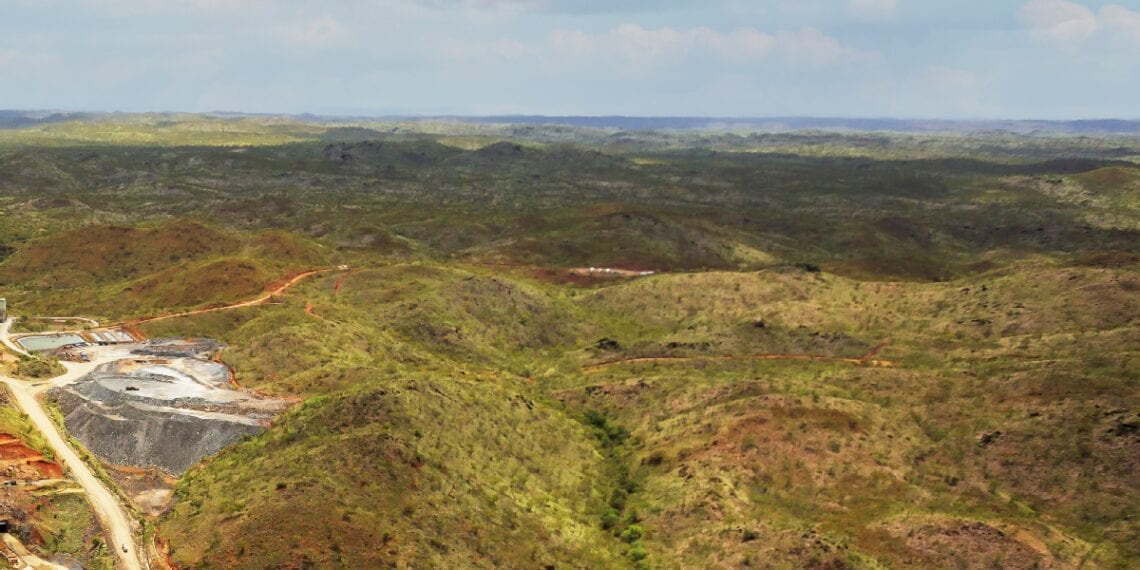St George Mining recently raised A$7 million to fund ongoing exploration at Mount Alexander. Apart from impressive intersections, like 17.45m @ 3.01% Ni, 1.31% Cu, 0.13% Co and 1.68g/t total PGEs from 37.45m and 8.49m @ 5.8% Ni, 2.6% Cu, 0.18% Co and 3.61g/t total PGEs from 183.9m, what else, in your opinion, makes this project stand out to investors?
We have a style of mineralization that is not seen anywhere else in Australia – we have high grades for each of nickel, copper, cobalt and platinum group metals. Grade is king and we have high grades in several metals that will be in increasing demand in the electrification age, and which are already trading at multi-year highs.
Our high-grade mineralization starts 30m below surface, which is very shallow, and current drilling is establishing a depth extent of more than 400m – and mineralization remains open at depth.
Metallurgical testwork shows that we can produce separate nickel and copper concentrates at industry leading grades with high credits for cobalt and platinum group metals – particularly palladium and rhodium. Our processing is through conventional flotation methods with no carbon intensive process, no coal fired electricity: we have green nickel.
On top of that, we are in an established mining region of Western Australia – about 100km south-west of BHP’s flagship nickel projects in the Agnew-Wiluna belt.
These are all features that speak to a clean, high-value project that will be easy to develop, which is an attractive outlook for investors.
Despite this recent success, what are some of the biggest challenges you’ve had to deal with over the past year?
Surface electromagnetic (EM) surveys have been excellent in identifying targets at shallow depths. We have made four high-grade discoveries across a strike of 5km in this way.
With a strike of that magnitude, there must be a significant depth extent to the mineral system as well. The challenge has been to find the larger deposits at depth, and surface EM cannot reliably see past around 300m below surface.
We have used other geophysical techniques to assist in targeting but, ultimately, it’s a matter of drilling deeper and using downhole electromagnetic surveys to vector into the mineralization. Our recent MAD199 hole was our breakthrough success with massive nickel-copper sulphides intersected at 333m downhole.
This confirmed our interpretation that we have a very large intrusive mineral system that has high-grade mineralization at depth, below the shallow deposits already discovered. We now have a pipeline of targets at depth to test with an added spring in our step.
With completion of the heritage survey at the Paterson Project scheduled for this month, what targets are set for the inaugural drill programme to follow in the June 2021 Quarter?
We are very excited about our Paterson Project. Our neighbours are fellow ASX-listed juniors Sipa and Antipa, which already have joint ventures with Rio, and Rio’s own Winu deposit is about 50km away.
The gravity and magnetic surveys we completed at our project last year showed a number of geophysical signatures that are typical of copper and gold deposits in the Paterson.
The heritage survey has been finished and we have 50 drill holes planned for our tenement. We expect to be drilling in June, and we can’t wait to test our copper and gold targets. This is a great opportunity to make a significant new discovery.
Our high-grade mineralization starts 30m below surface, which is very shallow, and current drilling is establishing a depth extent of more than 400m – and mineralization remains open at depth
With governments striving to achieve climate targets in the next few decades, what is your take on the opportunities and challenges that nickel and copper markets might encounter in the near future?
Decarbonization of the planet is definitely one of the dominant themes for this decade. Nickel and copper are essential for delivering decarbonization and we are set to see unprecedented demand for these metals.
There are plenty of statistics and forecasts that illustrate this. For example, nickel for use in electric vehicle batteries is set to increase more than tenfold from 2018 to 2025. With copper, Rio has estimated that we will need more copper in the next 25 years than was consumed in the last 500 years. These kind of market dynamics can lead to only one thing – and that is higher commodity prices.
Existing and emerging low-cost producers like St George will be big winners going forward. There will inevitably be a supply response. High cost projects – those with low grades or deep deposits or high processing costs – will be developed but only if the incentive price is high enough. That means the prices for nickel and copper will stay high for a sustained period.
What other developments are in store for St George over the year ahead?
More drilling is scheduled for both Mt Alexander and the Paterson Project, so there will be ongoing news flow of drill results and hopefully more discoveries. Our recent capital raising has given us the cash to take these projects to the next level of value creation for our shareholders.
We have also recently established the Broadview Project with two new tenements granted about 150km west of Perth. The project covers two belts interpreted to be splays off the belt that hosts the Julimar complex, which has yielded very significant discoveries recently.
We think the new project is prospective for nickel-copper sulphides as well as for copper and gold. Anglo American appears to have a similar view as they have recently staked ground of more than 10,000km2 next to our 250km2. Its early days at Broadview and we will initiate exploration there in the coming months while maintaining our primary focus on aggressive programmes at Mt Alexander and Paterson.












